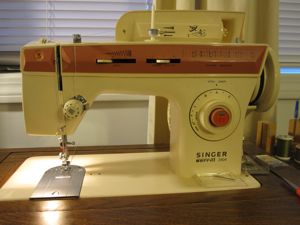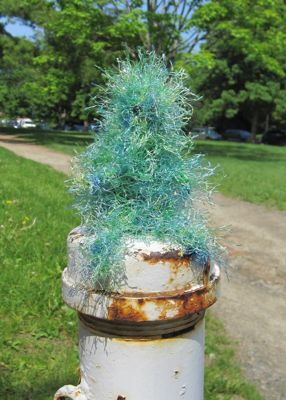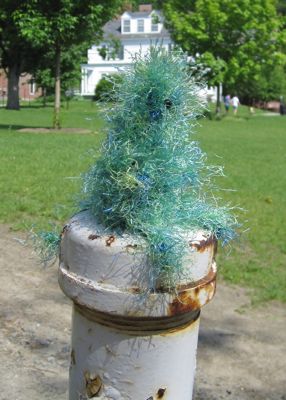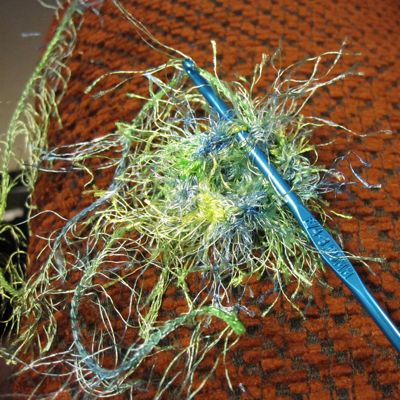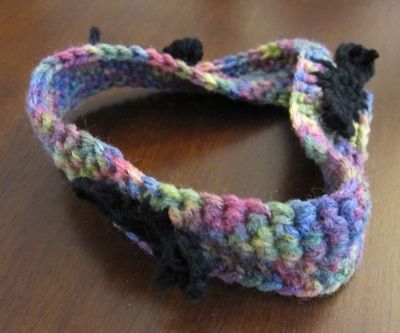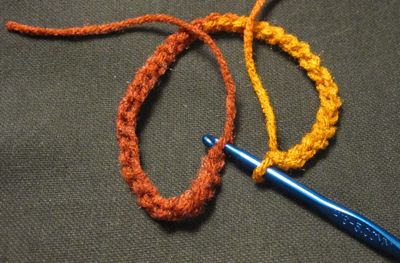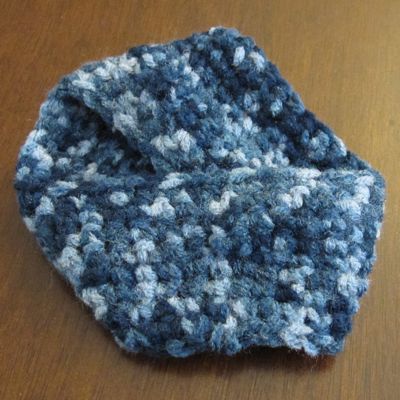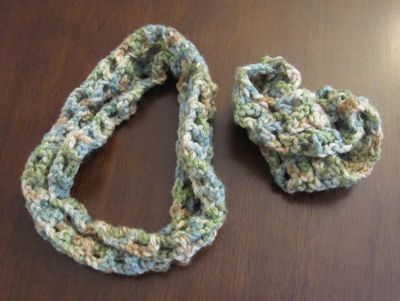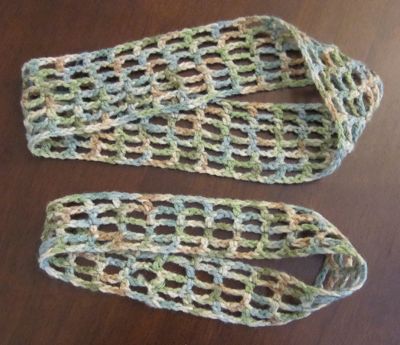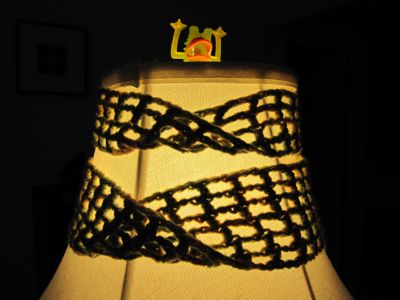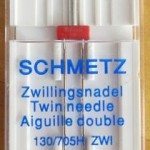 It was not too long ago that I discovered the twin needle. They come in various widths and weights, make two evenly-spaced lines of stitching a cinch, and mimic the commercial stitching of hems in t-shirts and other knit clothing. The bobbin thread zigzags between the two stitch lines on the back, tacking down the turned-up edge if you line it up right.
It was not too long ago that I discovered the twin needle. They come in various widths and weights, make two evenly-spaced lines of stitching a cinch, and mimic the commercial stitching of hems in t-shirts and other knit clothing. The bobbin thread zigzags between the two stitch lines on the back, tacking down the turned-up edge if you line it up right.
Last year I redid a bunch of shirts, bleaching and re-dying some that had faded and hemming others; one had some pinholes I could eliminate, one was far too long, and three were somewhat too long but also had an obnoxious silver Calvin Klein logo on the front left hem. That was when I learned about twin needles, doing research online into sewing knits. I had one in the machine cabinet drawer, but had never used it.
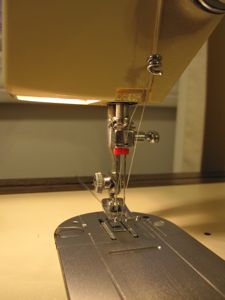
This summer, packing for a long trip, I discovered that instead of the five or six tank tops I thought I had, there were only three in the drawer. However, I have a stash of t-shirts I never wear, for various reasons, and one was way too big. I was quite surprised to discover it was only a large, as it looked like at least an extra large.
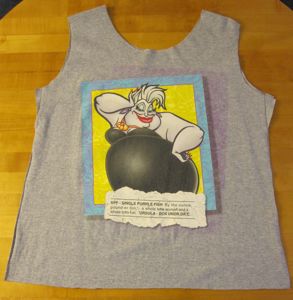
Unfortunately I forgot to take a “before” picture.
I made a quick and lazy alteration to it. I laid it out on a table, lined up a well-fitting tank top at the shoulders, and cut around it, leaving about three quarters of an inch on the sides and neck and more like an inch and a quarter at the bottom hem. This meant the armhole corner of the sides cut into the sleeves of the shirt, but I did not care. Then I turned the neckline and armholes under a half inch and stitched them down with the twin needle.
The armholes had to be stitched a second time, because between my complete lack of use of measuring instruments and the fabric pulling back a little as it stretched along the fold, a lot of the armhole turn-under was not caught by the stitch lines.
I pinned and stitched the side seams with a single needle, tried it on to check how even the bottom line was, and turned up and stitched the hem with the twin needle. Done! Easy. It is not perfect, but it is perfectly adequate.
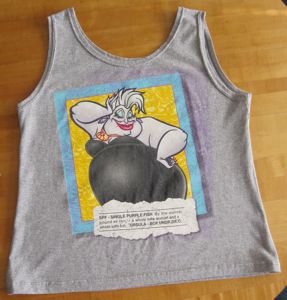
Now, I did get some skipped stitches and bobbin art, but the stitching will hold. I took my machine in for a tune-up while I’m out of town and the mechanic told me that skipped stitches are hard to avoid entirely with a twin needle because the bobbin hook has to catch both top threads, and it’s only designed to catch one. The machines that make the twin seam lines on commercial t-shirts have two separate bobbins. He said to minimize the problems, though, to turn the stitch length and tension both down. My stitch length settings run from 0 to 4, and I usually have the machine set to 3, with 4 for basting and gathering stitches. He said between 1.5 and 2 would be appropriate for twin needle stitching. Easing the thread tension so the top thread is pulled under the fabric a bit helps both with avoiding skipped stitches and with increasing the amount of stretch in the seam. ‘Twill be tried at the next opportunity – which may be more t-shirt remaking, now that I’ve done it once.
